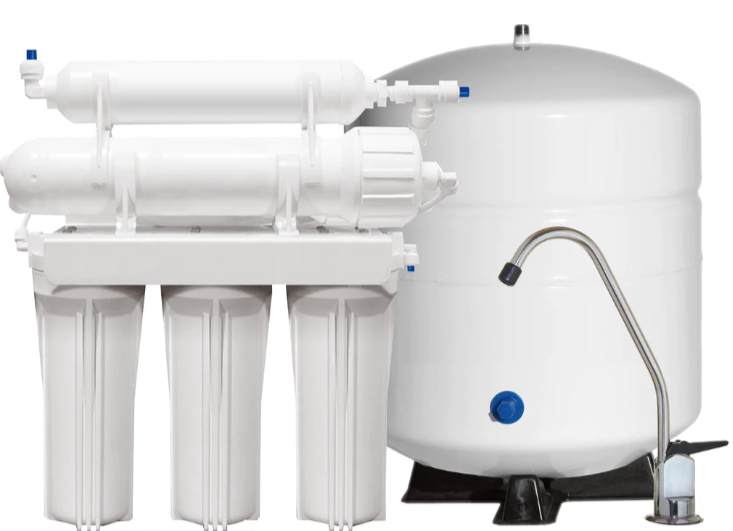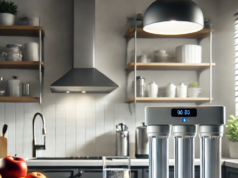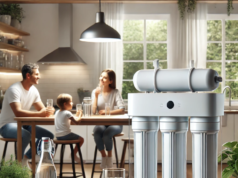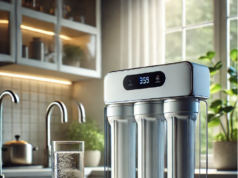Contents
Reverse Osmosis vs. Other Water Purification Methods: Which Is Best?
When it comes to drinking water, many people rely on various water purification methods to ensure that their water is clean and safe to drink. Among these methods, reverse osmosis has become increasingly popular due to its effectiveness in removing harmful contaminants. However, there are other water purification methods available as well, each with their own strengths and weaknesses.
Reverse osmosis is a process that involves forcing water through a semi-permeable membrane to remove impurities and contaminants. This method is highly effective at removing bacteria, viruses, heavy metals, and other harmful substances from water.
Other commonly used water purification methods include carbon filtration, UV purification, and distillation. Carbon filtration uses activated carbon to remove impurities from water and is effective at removing chlorine, pesticides, and other chemicals. UV purification uses ultraviolet light to kill bacteria and other microorganisms in water. Distillation involves boiling water and collecting the resulting steam, which is then condensed and collected as purified water.
So, which water purification method is best? The answer largely depends on your specific needs and the quality of your water source. If you have hard water with high levels of contaminants, reverse osmosis may be best. However, if you’re dealing with chlorine or other chemical contaminants, carbon filtration may be a more effective option.
Ultimately, the best way to determine which water purification method is right for you is to consult with a water treatment professional. They can help you assess your water quality and recommend the most effective and efficient purification method to meet your needs.
💧 = Use the coupon code SALEG3P800 to save $150 OFF on the 800GPD Tankless RO System with UV Sterilizing Light – Waterdrop G3P800 = 💧
Introduction
Water is an essential component of human life. However, many sources of drinking water contain contaminants that can be harmful to human health. Therefore, purification of water has become indispensable to ensure that drinking water is safe for consumption. There are several methods of water purification, but Reverse Osmosis (RO) is one of the most popular techniques known for its efficiency in purifying water. This blog post aims to compare Reverse Osmosis with other water purification methods to determine which method is best for purifying drinking water.
Types of Water Purification Methods
1. Reverse Osmosis (RO)
Reverse Osmosis is a water purification technique that uses a semipermeable membrane to remove contaminants from water. RO is one of the most commonly used water purification techniques because of its high efficiency in removing dissolved solids, chemicals, and impurities from water.
RO systems can be used to purify water from various sources like wells, lakes, rivers, and municipal water supplies. The RO process not only removes contaminants, but it also improves the taste, odor, and color of the water.
2. Distillation
Distillation is a water purification method that involves boiling water and then condensing the steam back into a liquid form. This process removes impurities and dissolved solids from water.
Distillation is an effective water purification method, but it requires a lot of energy to heat the water to the boiling point. In addition, it does not remove volatile organic compounds like benzene and chloroform, which can be harmful to human health.
3. Activated Carbon Filtration
Activated carbon filtration is a water purification method that uses a carbon filter to remove impurities from water. The activated carbon particles in the filter have a large surface area that attracts and traps contaminants in the water.
The activated carbon filter can remove chlorine, sediment, and volatile organic compounds from water. However, it cannot remove dissolved solids like salts and minerals from the water.
Comparison of RO with Other Water Purification Methods
| Water Purification Method | Advantages | Disadvantages |
|---|---|---|
| Reverse Osmosis | High efficiency in removing contaminants, improves taste and color of water, can be used with various water sources. | Produces large amounts of wastewater, requires electricity to operate, removes healthy minerals from water, expensive compared to other methods. |
| Distillation | Removes impurities and dissolved solids from water, effective in removing bacteria and viruses. | Requires a lot of energy to operate, does not remove volatile organic compounds, expensive compared to other methods. |
| Activated Carbon Filtration | Removes chlorine, sediment, and volatile organic compounds from water, easy to install and operate, low maintenance cost. | Cannot remove dissolved solids, has a limited lifespan, does not remove bacteria and viruses. |
The Best Water Purification Method
Choosing the best water purification method depends on various factors like the quality of the water source, the level of contamination, and the budget. However, considering the efficiency, effectiveness, and affordability, Reverse Osmosis is the best water purification method.
RO has a high efficiency in removing contaminants and impurities from water, making it safe for consumption. Although it removes minerals from the water, it is not significant enough to have an adverse effect on our health. Moreover, it can operate with various water sources and improve the taste and color of the water. Although it has some disadvantages like producing wastewater and being expensive compared to other methods, its effectiveness and efficiency outweigh the downsides.
Conclusion
Purification of water is essential to ensure that drinking water is safe for human health. There are several methods of water purification, but Reverse Osmosis is the best method due to its high efficiency, effectiveness, and affordability. However, each method has its advantages and disadvantages, and choosing the best water purification method should depend on the water source, the level of contamination, and the budget.
For more information about water purification techniques, you can check out this blog post.
Keywords: water purification methods, Reverse Osmosis, Distillation, Activated Carbon Filtration, water contaminants, safe drinking water, water sources, wastewater, dissolved solids, minerals.
💧 = Use the coupon code SALEG3P800 to save $150 OFF on the 800GPD Tankless RO System with UV Sterilizing Light – Waterdrop G3P800 = 💧
Shop now for Waterdrop N1
FAQs: Reverse Osmosis vs. Other Water Purification Methods
What is reverse osmosis?
Reverse osmosis is a water purification system that uses a semi-permeable membrane to remove impurities, such as minerals, bacteria, and dissolved solids, from drinking water. The process involves applying pressure on the water to push it through the membrane, which only allows pure H2O molecules to pass through. The result is clean, high-quality drinking water.
How does reverse osmosis compare to other water purification methods?
There are several other water purification methods available, such as distillation, carbon filtration, and UV sterilization. While each method has its advantages and disadvantages, reverse osmosis is often considered the most effective in terms of performance.
What are the benefits of using reverse osmosis?
Reverse osmosis offers several benefits, including:
- Removes up to 99% of impurities
- Produces clean, safe, and healthy drinking water
- Improves the taste and odor of water
- Environmentally friendly – does not require chemicals or electricity
Are there any drawbacks to using reverse osmosis?
While reverse osmosis is highly effective, there are some potential drawbacks to consider, such as:
- Wastes a significant amount of water during the purification process
- Removes essential minerals from the water that are beneficial to your health
- Can be expensive to install and maintain
- May require a professional to install and service the system
Which water purification method is best?
The best water purification method depends on your specific needs and circumstances. If you want high-quality, safe drinking water and are willing to invest in a long-term solution, reverse osmosis may be the best option for you. However, if you are looking for a more cost-effective solution or have specific water quality concerns, other methods may be more suitable. Consider your budget, water quality, and personal preferences when making your decision.
What is Reverse Osmosis?
Reverse Osmosis (RO) is a water filtering process that removes impurities and minerals from water by applying pressure to force water molecules through a semipermeable membrane. The membrane only allows pure water molecules to pass through and traps impurities, ensuring a high-quality, purified water supply.
How Does Reverse Osmosis Work?
The RO system consists of several stages of filtration. First, the water passes through a sediment filter to remove any large particles, such as sand or dirt. Next, it moves through a carbon filter to remove chlorine and other chemicals that affect taste and odor. Then, the water enters the RO membrane, where it is forced through a semipermeable membrane that blocks impurities and minerals. Finally, the purified water goes through a post-filter or remineralization filter to add back healthy minerals before exiting through a faucet.
Benefits of Reverse Osmosis
- Produces pure drinking water with a great taste.
- Removes harmful bacteria, viruses, and chemicals.
- Improves the quality of your beverages and ice cubes.
- Protects your plumbing and appliances from mineral buildup.
Conclusion
Reverse Osmosis is an effective and efficient water filtration system that ensures clean, pure, and safe drinking water. There are many brands of RO systems available in the market, and it is important to choose a reliable and durable system that suits your needs.
If you want to learn more about Reverse Osmosis, you can visit the Reverse Osmosis Wiki page on Wikipedia.
Overview
- Water purification is important to ensure the safety of drinking water.
- There are various water purification methods available in the market.
- Reverse Osmosis is one of the most popular water purification methods.
Reverse Osmosis
- Uses a semi-permeable membrane to filter out impurities from water.
- Removes minerals, chemicals, and bacteria.
- Produces a high-quality, clear, and odorless water.
- Requires electricity and produces wastewater during the purification process.
Other Water Purification Methods
- Boiling: kills bacteria and viruses, but does not remove other impurities.
- Filtration: uses a physical barrier to remove impurities, but may not remove all contaminants.
- UV Purification: uses UV light to kill bacteria and viruses, but does not remove other impurities.
- Chlorine Treatment: kills bacteria and viruses, but may not remove all contaminants and can produce harmful byproducts.
Which Is Best?
- There is no one-size-fits-all answer.
- Reverse Osmosis is a popular choice for its effectiveness in removing impurities.
- Other methods can be useful for specific situations or as a temporary solution.
- Consider factors like cost, maintenance, and water source before choosing a water purification method.
💧 = Use the coupon code SALEG3P800 to save $150 OFF on the 800GPD Tankless RO System with UV Sterilizing Light – Waterdrop G3P800 = 💧
Category – Reverse osmosis and filters





































